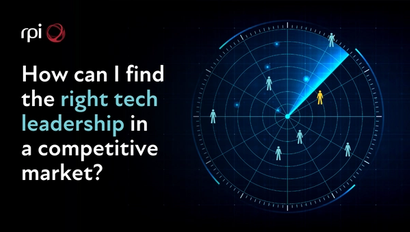The Internet of Things (IoT)is on a path of incredible growth. IoT devices are expected to generate73.1 zettabytes (73.1 trillion gigabytes) of data by 2025, and by 2030 there could be 25.44 billion IoT devices in the world. With the current population projection, that’s over three IoT devices per human.
A large part of their function is and will be payments. In 2022, IoT payment terminal revenue is $39.4bn worldwide. In 2030, it should be $52.5 billion, and that’s only considering devices that are designed and operated just for payment. IoT means that more and more devices are going to have payment functionality built into them; fridges, cars, watches, speakers, and of course phones are going to be connected to the internet of things (as well as the internet more generally) and they’ll be ready and able to make payments too.
Here is the growing role of IoT in payments, and how to prepare for it.
What are IoT payments?
To the consumer, the boundaries between an online payment, a contactless payment, and an IoT payment may be mysterious or even irrelevant. All they care about is convenience and security. Technical terms aren’t going to interest them — they just want to pay smoothly and safely.
Strictly speaking, an IoT payment is automated and triggered by real-time data. That might be a connected car making a payment when it drives onto a toll road, or a smart fridge ordering orange juice when it detects that it’s running low. There’s no human decision to make a purchase, and no manual input is required to complete the transaction.
So, how will IoT change payments, and what do businesses need to consider and remember?
Consumer confidence
Every business in a payment chain benefits from a rise in IoT payments. Automated buying decisions should be more regular and dependable revenue than payments that rely on human memory and motivation. What’s more, given the rise of open banking, those automated payments will increasingly come hand-in-hand with bank-to-bank payments, which means more dependable transactions that clear many times faster.
The consumer benefit of such frictionless payment is obvious too, but there will inevitably be a large section of the public who are suspicious or hesitant when it comes to IoT payments. You sacrifice a lot of your autonomy when you make payments autonomous, and many will be reluctant to surrender to the authority of their fridges. IoT payment progress will not only be technological — winning over sceptics will take a coordinated marketing and communications campaign
One other note of caution — what is exciting and revolutionary to a business may not necessarily be as thrilling for consumers.‘Dash’ buttons were Amazon’s first IoT devices, and they were supposed to revolutionise FMCG purchasing. The idea was that households would place brand-specific buttons in logical places (on washing machines, in bathroom cabinets, in kitchens etc.) and click the button to order supplies whenever they were running low. If you’re taking out the laundry and see you’re low on detergent — click. Shaving, and low on foam? Click. An easy, frictionless purchasing method from which shoppers would never look back. Except it didn’t take off.
There was a gulf between what Amazon thought people would want, and what they really did. Maybe people weren’t interested in being tied to specific brands, maybe they were worried about young children pressing the button casually and repeatedly, and maybe they just didn’t want lots of buttons stuck around their homes. All of those were legitimate worries, and one that Amazon (presumably) didn’t think would be common enough to stop Dash from taking off. However, they were, and they did.
Another very legitimate concern is about the security of IoT payments. That has to be addressed in two ways. One is of course to make sure they are safe, and the other is to convince people that they are.
Security
If everything is connected, and many of the devices handle payments and bank details, security breaches could be catastrophic. If a hacker can access any one area, they could theoretically use IoT to reach any of them. Not only are businesses’ and consumers’ money at risk, but so is their personal and contact data, which in a post-GDPR world, can mean heavy fines.
Imagine in the not-too-distant future, a woman is driving (or being driven by) her electric car, which she takes to a charging station, where she gets out, and lets the car park itself in a charging bay, where it decided how much charge it needs, and pays for it. While the car is charging, its owner heads to the convenience store on site, which happens to be a smart store. She scans in the turnstiles by holding her smart watch near a scanner, picks up some milk and a couple of ready meals, then walks out with those items while the store technology recognises her purchases and charges her account. She takes her items back to her car, which is now fully charged, and she drives home.
All of that was backed by IoT, and happened without a card or payment terminal of any kind. It was astonishingly convenient for the consumer, but anyone with an eye for security could see that the ‘surface area’ of that interaction was huge. If daily life is going to be littered with IoT touchpoints and transactions, the targets for hackers and cyber criminals will be seemingly unlimited.
How to manage, encourage, and protect IoT payments
As a concept, IoT payment is proven, so it’s on the level of execution that businesses are taking risks, succeeding and failing. It’s in areas like this one that demand doesn’t often exist — few shoppers would tell you they want their fridge to buy their fruit juice, but once they get used to a new way of life, they don’t imagine going back.
Because of that, you sometimes have to take make educated guesses as to what will succeed. That’s a high-risk high-reward strategy, and you might be creating the next ‘killer app’ for payment and smart devices, or you might be betting everything on the next Amazon Dash. You’ll only know if it was worth it when people vote with their wallets (or with their smart fridges).
To take the necessary risks with the best chance of success, to identify the gaps for innovation and monetisation, and to bring the public along with your offerings, you need a unique combination of skills within your business. In the search for individuals with those abilities, you’re up against scores of other organisations. For something so intense and competitive, partnering with experts to run your search for you will save you a lot of time and many headaches.
RPI brings a remarkable payments heritage to that search, and our pool of contacts and candidates is unrivalled. Get in touch today to keep at the front of the pack in IoT payments.
![More and more devices are becoming payment methods. Here is the infrastructure and preparation that will demand.]](https://cdn.sanity.io/images/x2j6emyv/production/8d834b7b697b35c186778e85e735c3ab0461da59-1200x680.png?w=1200&h=680&auto=format)


